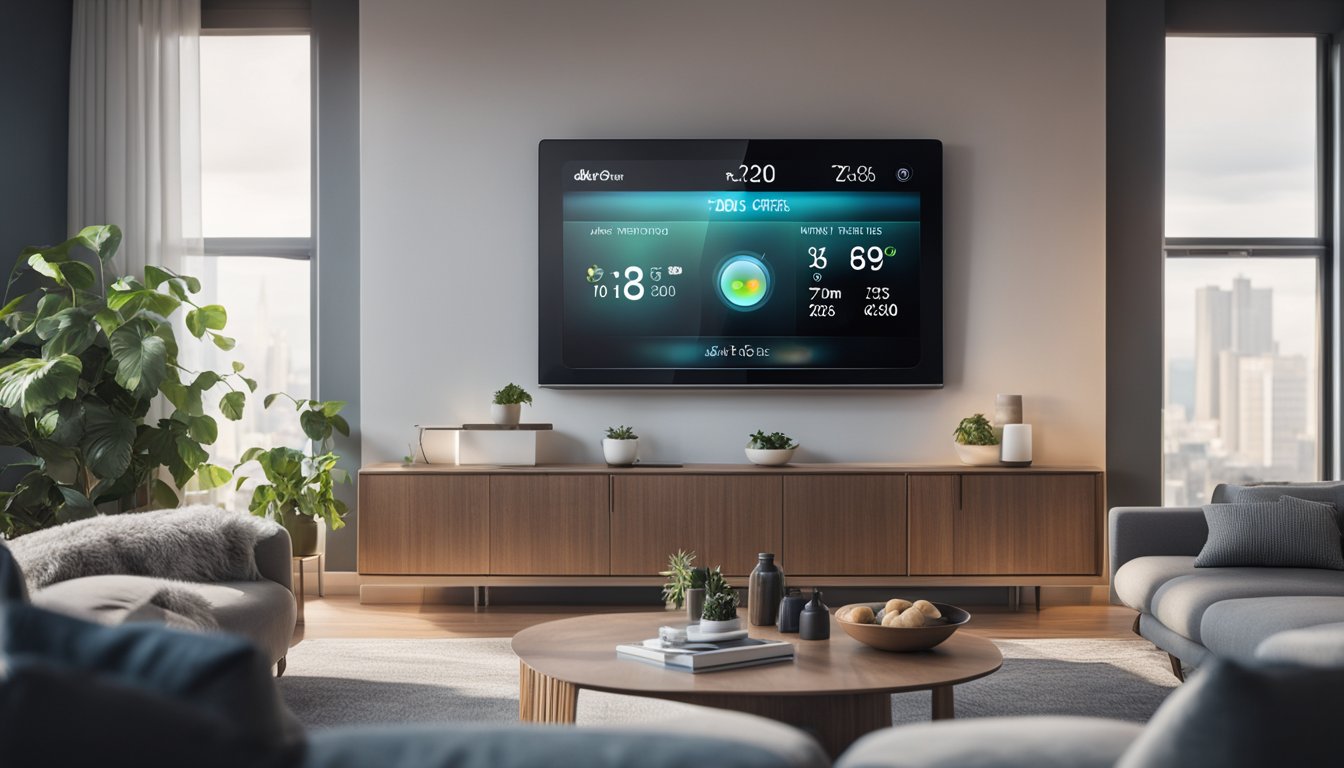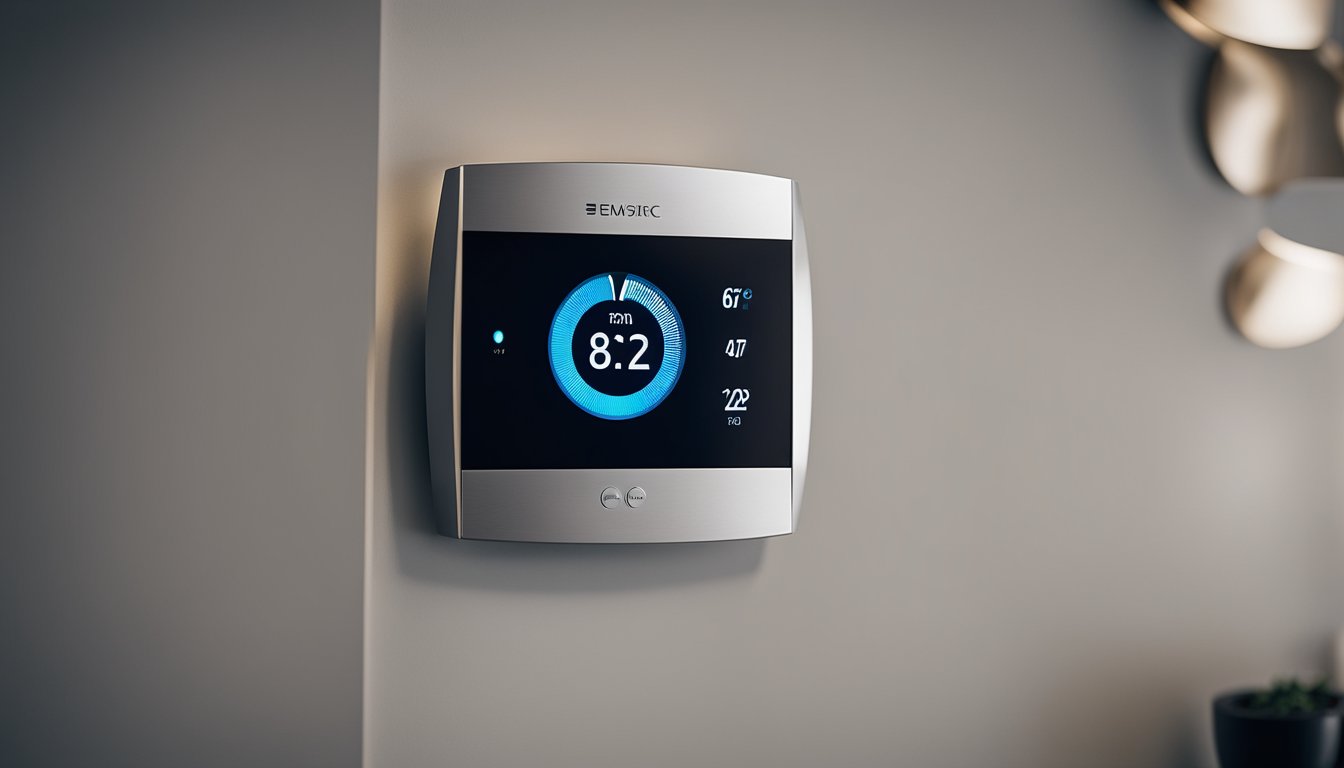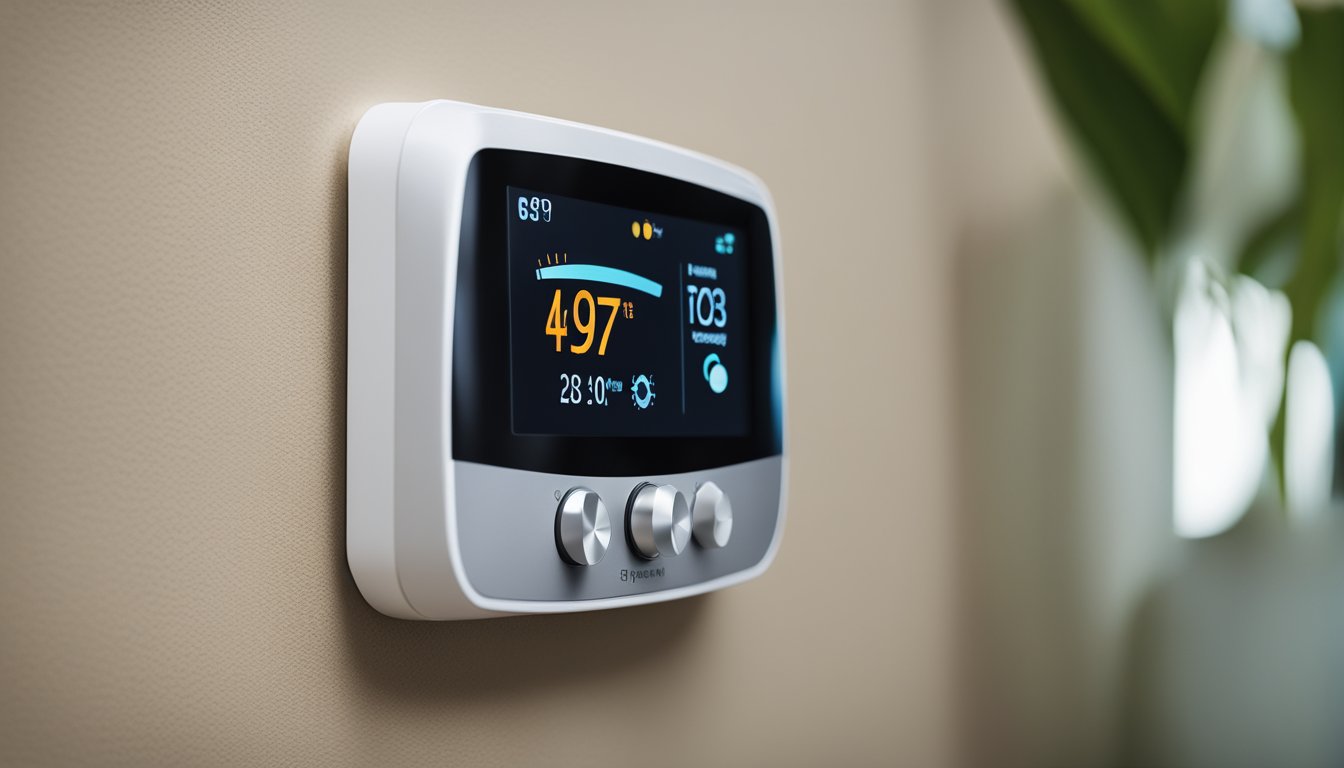Late updated: 09 Feb 2025 09:02
Written by: Eleanor Hartman
Understanding Smart Thermostats For UK Homes: A Guide to Energy Efficiency
Smart thermostats are revolutionising how we manage heating in our homes across the UK, offering a host of features designed to improve energy efficiency and reduce bills. By connecting our heating systems to the internet, these devices allow us to control the temperature of our homes remotely through smartphones and other compatible devices. With the ability to integrate with smart home ecosystems like Amazon Alexa and Google Home, smart thermostats are becoming a central hub for household energy management.

As we delve into this digital age, understanding how smart thermostats work can empower us to make informed decisions about our home heating needs. Beyond just remote control, many of these devices offer diagnostic capabilities, alerting us to inefficiencies in our heating systems and suggesting optimisations. This proactive approach helps maintain an energy-efficient home, ultimately leading to cost savings and a more environmentally friendly lifestyle.
Our exploration will also address common questions surrounding smart thermostats, demystifying how they differ from smart meters and assessing their overall value. This knowledge equips us to embrace smart heating solutions confidently, fostering a more sustainable future for our homes.
Key Takeaways
- Smart thermostats improve energy efficiency by allowing remote control.
- They integrate with smart home systems for comprehensive energy management.
- Diagnostic features help optimise our home heating systems.
The Essentials of Smart Thermostats

Smart thermostats are revolutionising how we manage our home heating systems. Key aspects like the differences between smart, programmable, and traditional thermostats, crucial features for UK homes, and installation considerations are important when choosing the right option.
Comparing Smart, Programmable, and Traditional Thermostats
Smart thermostats, such as the Nest Learning Thermostat and Ecobee Smart Thermostat Premium, adapt to our routines and preferences automatically. They offer Wi-Fi connectivity for remote control and energy usage insights.
Programmable thermostats allow us to set heating schedules for different times but require manual programming. Traditional thermostats provide basic temperature control with no scheduling capability. When comparing, consider how each type supports energy savings, user-friendliness, and integration with other smart home devices.
Essential Features for UK Homes
For UK homes, smart thermostats should be compatible with systems like central heating, boilers, and heat pumps. Features like geofencing can adjust temperatures based on our location, enhancing efficiency.
It's beneficial if the thermostat connects with popular smart devices like Amazon Alexa or Google Assistant for voice control. Energy-saving features and customisable schedules help reduce costs. Devices like the Hive Thermostat Mini offer user-friendly interfaces ideal for diverse household needs.
Installation and Compatibility Considerations
Before installation, ensure that the smart thermostat is compatible with our existing heating system. Some systems might require additional components or professional installation. While many smart thermostats are marketed as DIY-friendly, professional installation ensures optimal performance and avoids potential damage.
Compatibility with UK electrical standards and the presence of a C-wire, which provides continuous power, are also important. Smart thermostats generally work with most boiler systems in the UK, but checking compatibility specifications is crucial.
Optimising Home Energy Use

Implementing smart thermostats in UK homes offers significant benefits. By efficiently managing heating and cooling, they help reduce energy costs. We can utilise features like smart scheduling, remote access, and advanced automation to create a more energy-efficient and cost-effective environment.
Smart Scheduling and Remote Access
Smart thermostats allow us to tailor our heating schedules according to our daily routines. We can programme them to lower temperatures when we're out and raise them just before we return, maximising energy savings. This capability ensures no energy is wasted heating an empty home, which is a common issue with traditional systems.
Remote access enhances this control further. Through apps on our smartphones, we can adjust the heating or hot water control from anywhere. This flexibility means we can respond to unexpected changes in our plans. For instance, if we return home earlier than expected, we can remotely increase the heat to ensure comfort.
Energy Savings and Cost Benefits
By incorporating self-learning features, smart thermostats analyse usage patterns and adapt to our habits. They optimise temperature settings based on factors like thermal behaviour and external weather conditions. Such intelligent adjustments significantly reduce heating and cooling costs.
Smart radiator valves play a crucial role by allowing us to control individual room temperatures. This zone-based heating system prevents unnecessary energy use in unoccupied rooms, further enhancing energy efficiency. In essence, these smart devices ensure we only use energy where and when it's needed, helping us save money effectively.
Advanced Control and Automation Features
Another notable advantage is the advanced control options available through automation. Voice control integration with systems like Amazon Alexa or Google Home simplifies temperature adjustments. We can command our thermostat verbally, adding convenience to energy management.
Moreover, features like geofencing enable automatic adjustments based on our location. Once we get close to home, the heating can activate automatically. This kind of automation ensures optimal energy use without constant manual intervention. By leveraging these smart energy-saving devices, we reduce energy costs while maintaining comfort.
Frequently Asked Questions

Smart thermostats offer an innovative way for UK homeowners to improve energy efficiency and comfort. They integrate seamlessly with existing heating systems and provide remote control capabilities, creating a more tailored home environment.
What are the benefits of installing a smart thermostat in a UK home?
Smart thermostats can significantly enhance energy efficiency by learning our routines and adjusting temperatures accordingly. This results in more precise heating control, often leading to reduced energy bills. Additionally, we gain the convenience of remote management and improved comfort levels.
How can a smart thermostat be integrated with a UK boiler system?
Integrating a smart thermostat with a UK boiler involves connecting the device directly to the boiler. This usually requires compatibility with the existing system. Professional installation is often recommended to ensure proper setup and maximise efficiency.
Which features should I look for when choosing the best smart thermostat in the UK?
When selecting a smart thermostat, important features to consider include compatibility with our existing heating system, user-friendly apps, energy reports, and learning capabilities. Integration with smart home ecosystems like Google Home or Amazon Alexa can also add convenience.
Can smart thermostats in the UK provide a cost-effective way to manage heating?
Yes, smart thermostats offer a cost-effective approach by reducing unnecessary heating. They customise heating schedules based on our habits and home occupancy, often resulting in lower energy consumption. Initial installation costs can be offset by the savings on energy bills over time.
What potential drawbacks should homeowners consider before installing a smart thermostat?
Homeowners should consider the upfront cost of the device and installation. Compatibility with existing heating systems can also be an issue for some. Additionally, while the technology is often user-friendly, there might be a learning curve for those unfamiliar with smart home devices.
How can I control my heating system remotely using a smart thermostat?
Remote control is typically achieved through a mobile app. We can adjust temperatures, set schedules, and monitor energy usage from anywhere with an internet connection. This provides flexibility in managing our home's climate, whether we're indoors or away.